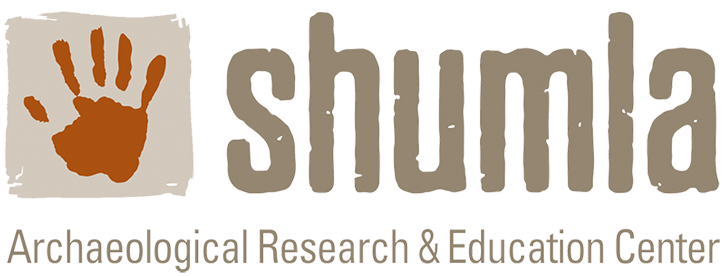In the Lab: Determining Paint Stratigraphy
Why study paint stratigraphy? What is paint stratigraphy, anyway?
In ancient societies, the process of producing art carried as much meaning as the finished product. This is why we seek to discover how the Pecos River style murals were painted.
At the White Shaman site, Carolyn Boyd encountered two puzzles that previous research had overlooked. First, the colors of several figures were interwoven—different colors of some figures pass over and under each other. Second, she discovered that the mural was painted in a specific color sequence: black, red, yellow, and finally, white. The evidence suggests that producing the White Shaman mural required careful planning and execution under a set of rules. Is the White Shaman mural a unique example of Pecos River style art? Or was the practice of sequencing colors more widespread? Answering this question is a major goal of the Hearthstone Project.
Our current research seeks to discover whether artists followed these rules at other sites in the region. With funding from the National Endowment for the Humanities and your generous gifts, we are examining the paint stratigraphy at three sites: Panther Cave, Fate Bell Shelter, and Halo Shelter. We study paint stratigraphy to determine the order and relative position of paint layers. The bottom paint layers were applied first, and those on top last. If the murals at other rock art sites follow the same rules as the White Shaman site, we are one step closer to demonstrating that several thousand years ago the hunter-gatherers of the region shared a cosmovision and belief system that governed not just the symbols used in the paintings, but also the process that produced the art.
Our Method
In an earlier blog, we described how Shumla archaeologists secured photomicrographs of the paint layers within single figures and among separate but interwoven figures. That is only the first step toward determining paint stratigraphy. After fieldwork is completed, two researchers examine the photos and enter their findings into a spreadsheet. A third observer resolves disagreements. These researchers work independently of each other. In fact, they are located in three different cities.
At Halo Shelter, we collected data at 238 locations on the mural. One of these locations was of special interest. Figure A005 at Halo Shelter is an anthropomorph with red antlers tipped with black dots. We will use this figure to demonstrate our method.
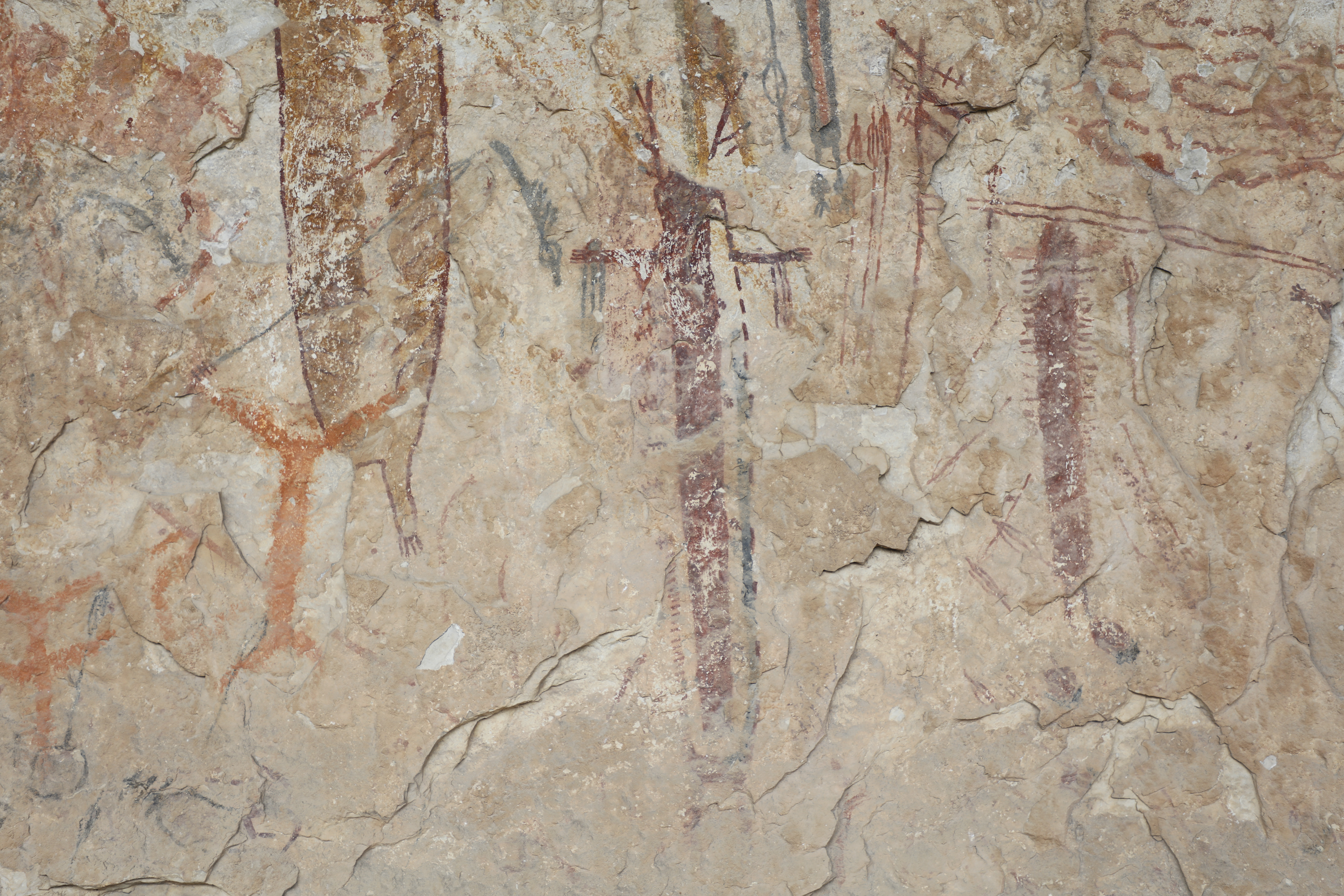
Figure 1: Context photo of anthropomorph A005 (center) at Halo Shelter.
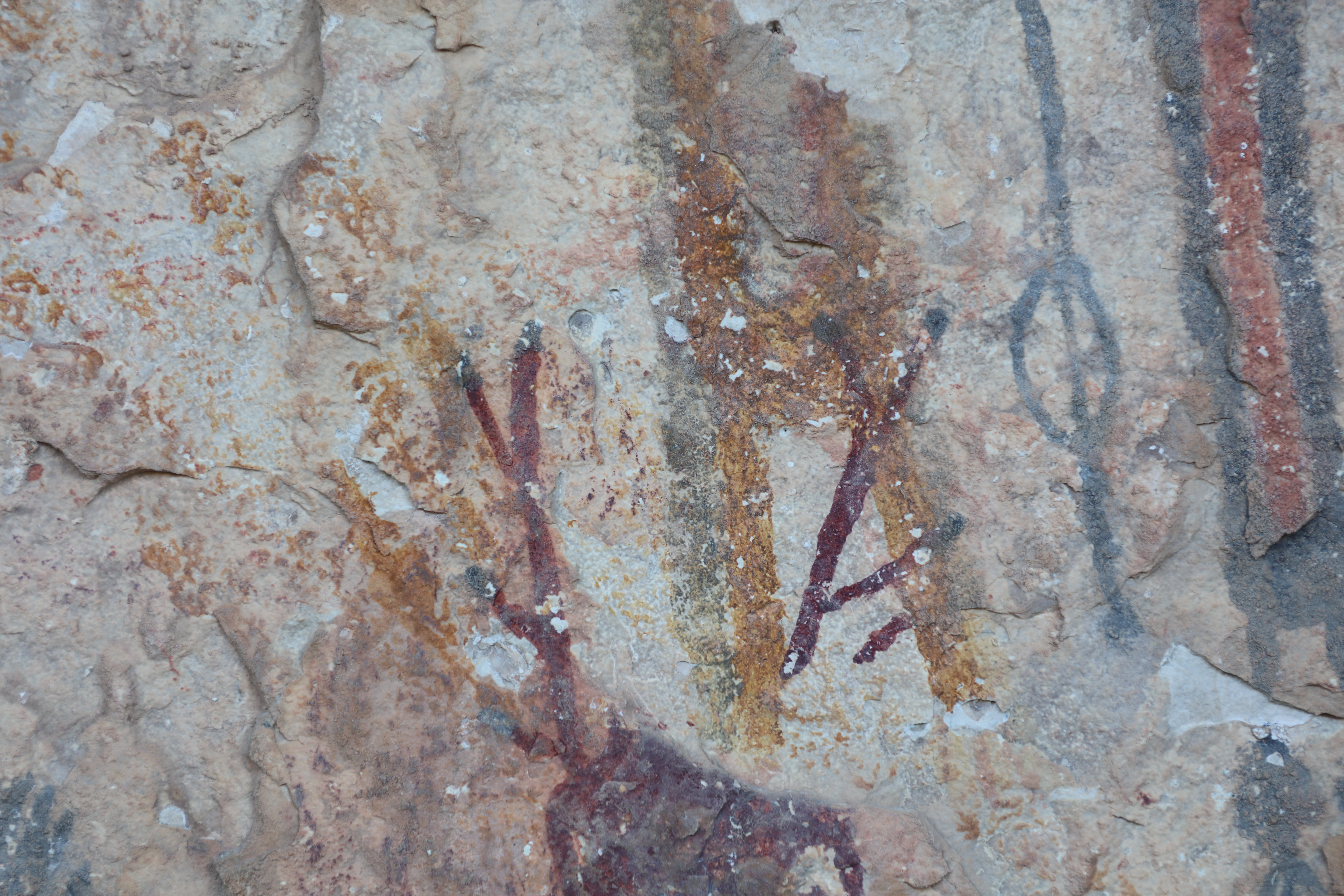
Figure 2: Closeup of the antlers and black dots of A005.
Carolyn Boyd wanted to discover which was painted first, the black dots or the red antlers. Several years ago, at the White Shaman site, she observed that the red antler tines were partially overlying the black dots. Following the law of superposition this means the artists painted the black dots first. Was this also the case at Halo Shelter?
During fieldwork, the crew secured photomicrographs of the black dots and antler tines at the locations marked in Figure 3.
Back in the laboratory, independent observers examined the photographs we collected and determined the stratigraphic relationship of each paint layer. Figure 4 is a photomicrograph taken in the area marked DL001. You can see red and black paint. The analysts determined that red paint is overlying the black paint at this location. Near the black-red border, analysts noted cracks in the red paint. Inside the cracks, and below the red, the underlying black paint is visible.
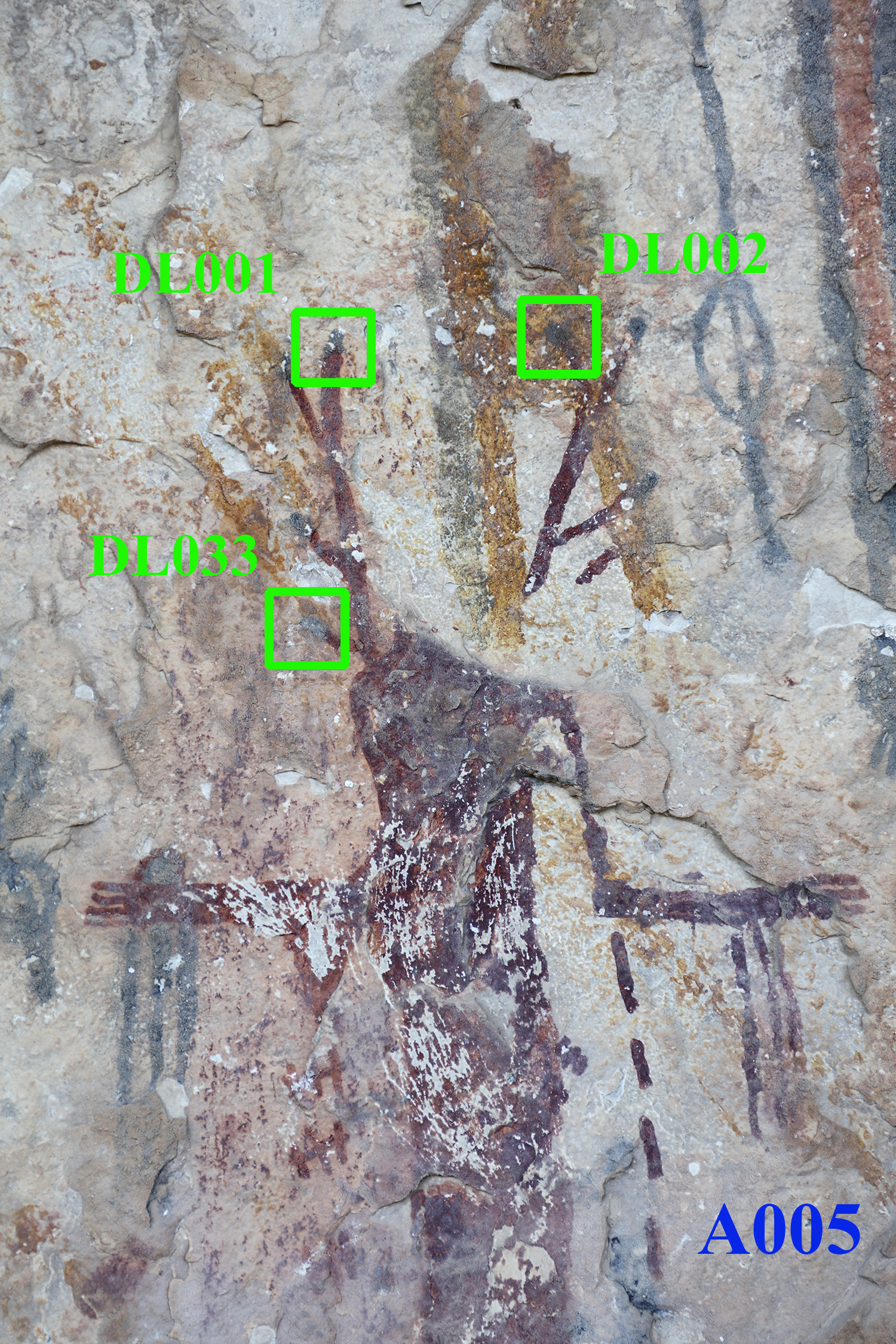
Figure 3: Microscopy locations examining the intersection between red antlers and black dots of anthropomorph A005.
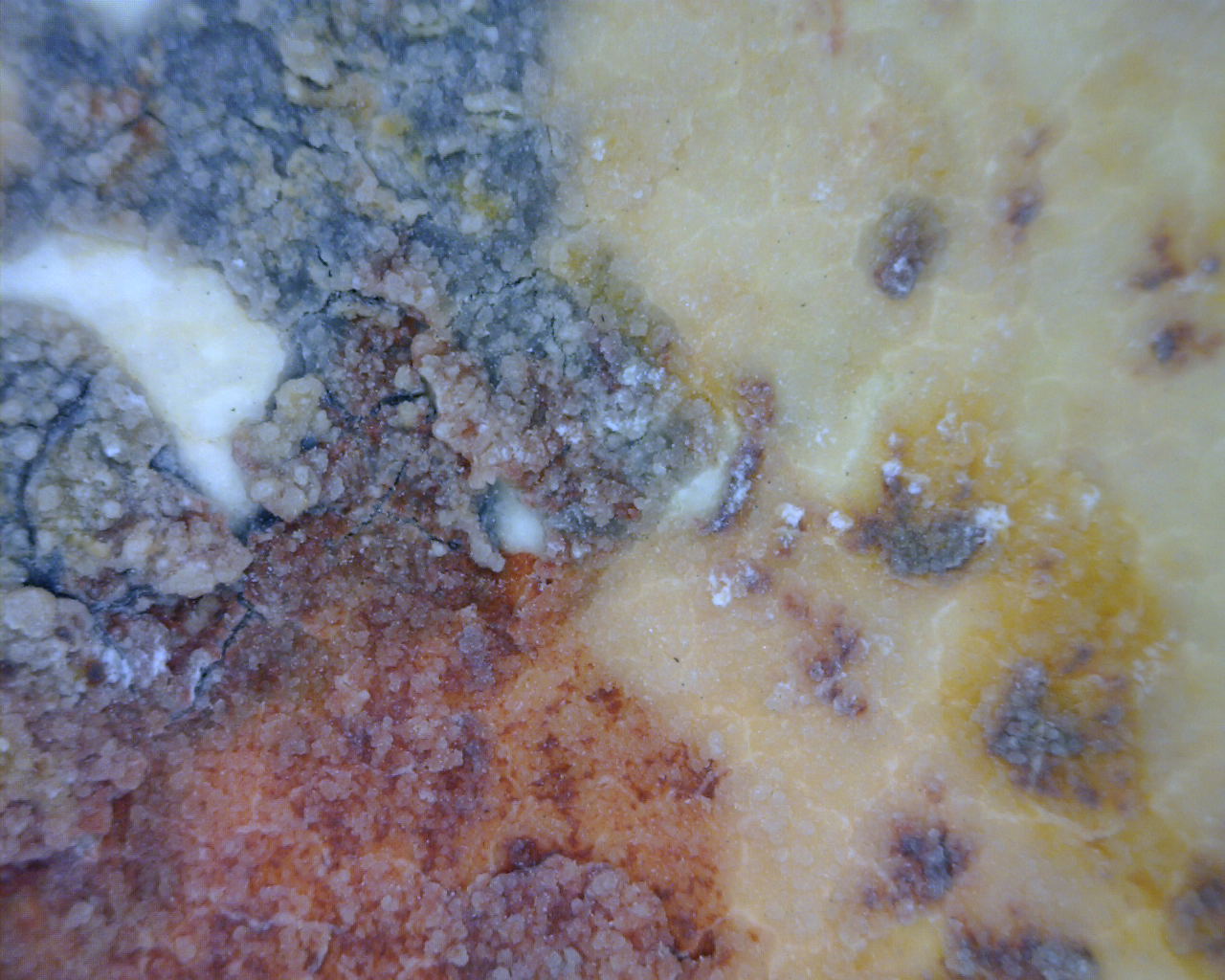
Figure 4: Photomicrograph of DL001, located at the intersection of a red antler tine and a black dot on anthropomorph A005.
Once the analysts have decided on the sequence of paint layering, they note it on a spreadsheet, along with notes about the determination, as seen in Figure 5.
As noted in Figure 5, in three separate analysis locations on antler tines, red is over black. This would require the painter to place the black dots above the head of the anthropomorph, and then draw the red tine, a sort of connect the dot procedure. Following such a plan only makes sense if the sequence of color placement carries significant meaning.
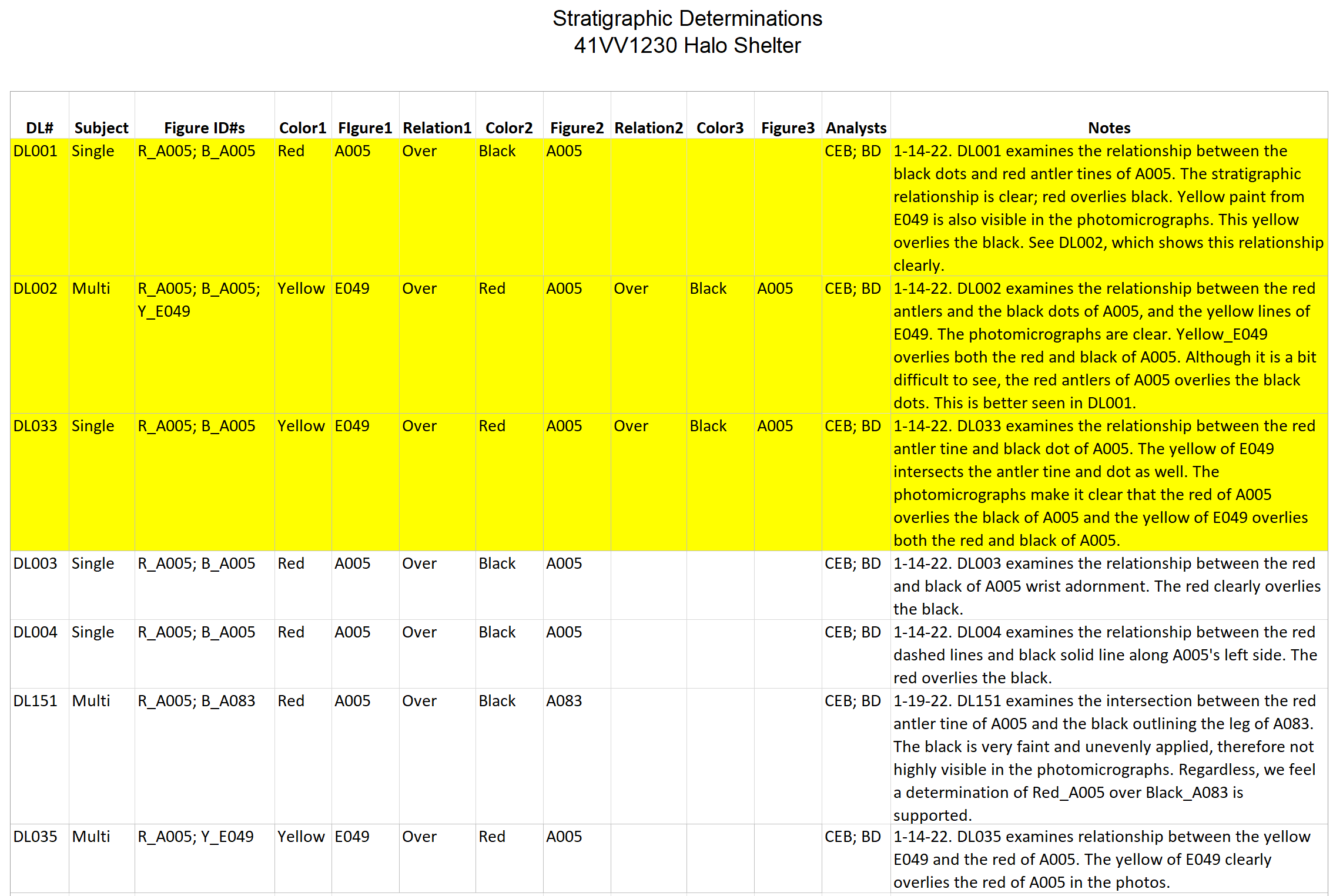
Figure 5. Excerpt from the spreadsheet containing the stratigraphic determinations for Halo Shelter. The highlighted area shows the results of microscopy locations DL001, DL002, and DL033 shown in Figure 3.
Into the Matrix
The next step is to graphically demonstrate the painting sequence by entering the stratigraphic determinations into the software program, Harris Matrix Composer, which produces a visual record of the paint layers in the mural.
The Harris Matrix is a sequential diagram representing the stratigraphic relations of all individual units of stratification at an archaeological site. We have adapted the method to paint layering in the mural. The Harris Matrix diagram is a relative calendar showing the order in which the paint was applied. In Figure 6, we show the Harris Matrix diagram for our example, the anthropomorph A005.
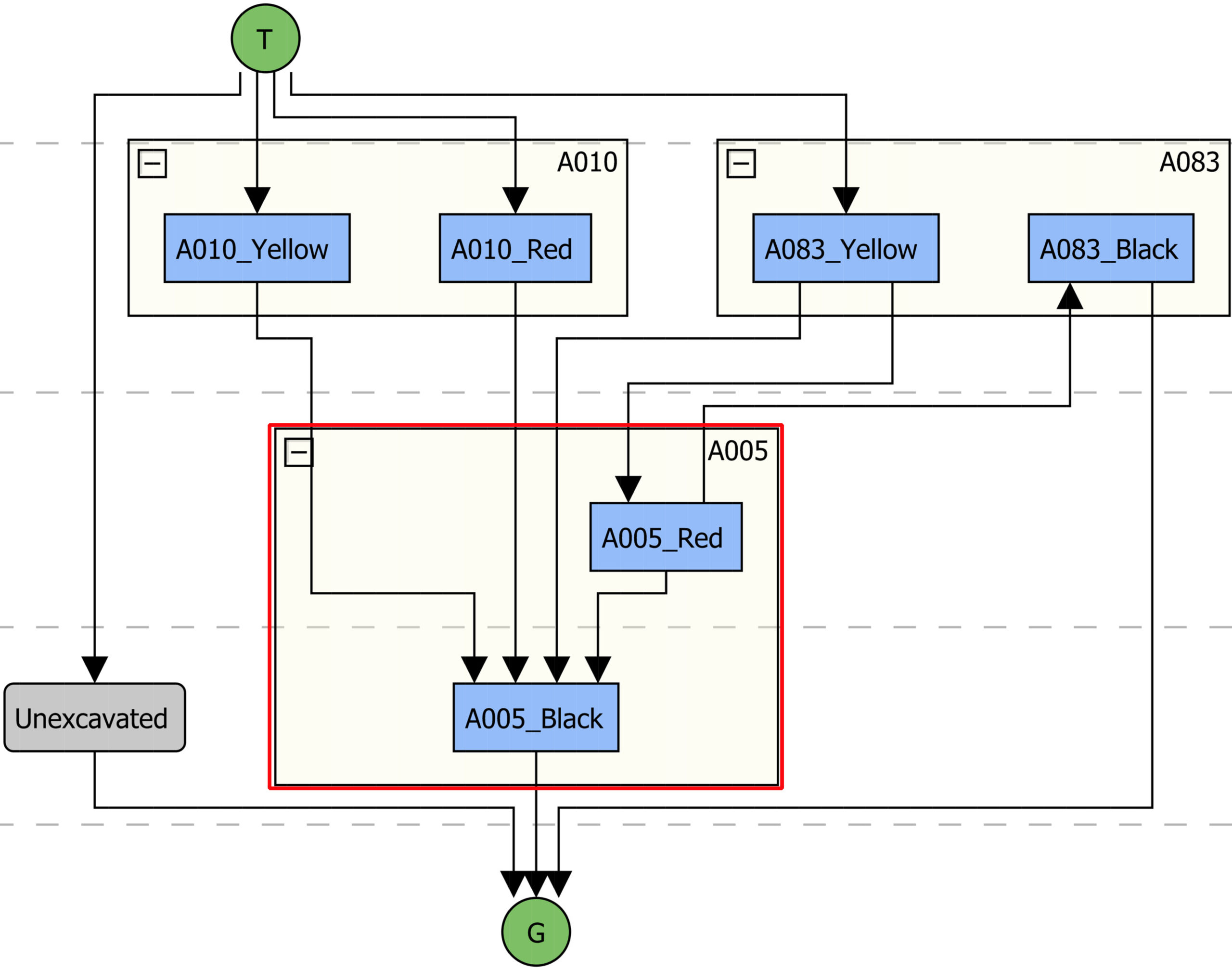
Figure 6. Harris matrix illustrating the paint layer stratigraphy associated with anthropomorph A005. The light-yellow box with a red outline represents A005. The label G (ground) stands for the shelter wall, and T means top. Any layer directly connected to T by an arrow is the top layer. In this figure, Unexcavated either means an unpainted or an unstudied portion of the panel.
Looking inside the A005 box, you can see two blue boxes. These are the paint layers forming the anthropomorph. The blue box labeled A005_Red represents the red paint layer in figure A005, and A005_Black represents the black paint layer. Arrows drawn between the blue boxes show the stratigraphic relationships. So, following the arrow, you can read “A005_Red lies above and touches A005_Black.”
The paint layering relationships do not stop with a single figure. In Figure 6, two other light-yellow boxes represent figures A010 and A083. See if you can read this matrix following the arrow rules.
Note that the arrow may point in any direction. For example, you can follow the arrow from A005_Red to A083_Black. Read this as “red paint in figure A005 overlies the black paint in figure A083”. By reading the matrix it is immediately apparent that the three anthropomorphs, A005, A10, and A083 contact each other. Can you identify which two figures are intertwined? This matrix represents only three of the 200-plus figures in Halo Shelter. Such is the complexity of these sites.
We will delve into the process of building a Harris Matrix for a pictographic mural in the next blog.
